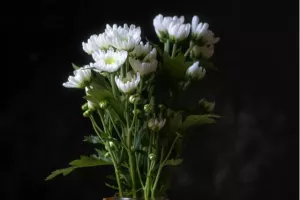Tulips are Liliaceae, Tulipa. Leaves 3 to 5, strip-lanceolate to ovate-lanceolate, single terminal flowers, large and showy, tepals red or mixed with white and yellow, sometimes white or yellow, 5-7 cm long , 2 to 4 cm wide, 6 stamens of equal length, glabrous filaments, no style, stigma enlarged and cockscomb, flowering from April to May. Tulip is an important spring bulbous flower, suitable for clump planting to arrange flower beds and flower borders. It can also be used as cut flowers and flower arrangements to decorate indoors. It can also be potted for winter viewing. Tulips are medicinal and dry. Flowers can get rid of bad spirits among confidants; roots can calm.
1.Living environment
Temperature:
Tulips are extremely cold-resistant and can withstand low temperatures of -35°C during winter dormancy, but they can also be cultivated in the open field in areas with a minimum winter temperature of 9°C. Low temperatures below 9°C for more than 16 weeks will break the bulb dormancy and make it normal growth and development. The optimum temperature for germination is 9 to 13°C, and it basically stops below 5°C. The optimum temperature for growth and flowering is 15 to 20°C, and the leaves tend to grow leggy when the temperature exceeds 20°C. The temperature during the formation period of the new ball is about 20 ℃. The optimum temperature for flower bud differentiation is 20-30℃, and flower bud differentiation is inhibited when the temperature exceeds 30℃, but the temperature requirements are slightly different among different varieties.
Light: Tulip is a day-neutral plant, which is not strict with the length of sunshine. It likes light and is slightly resistant to partial shade, but the light intensity is too low, the photosynthesis is weakened, and the growth is poor.
Moisture:
Tulips are neither drought nor water tolerant. If the soil is too wet, the ventilation is poor, and gray mold is prone to occur. If it is too dry after planting, the flower buds will dry and shrink in the early stage, forming a "blind flower".
Soil:
Likes fertile, well-drained, sandy loam rich in humus, and does not grow well on heavy clay soils. pH should be 6.0~7.0
2.Growth habit
Tulips are bulbous flowers planted in autumn, bloom in spring and dormant in summer. They are perennial plants, and their growth and development can be divided into 5 periods.
Germination period
After the bulbs are planted in autumn, they begin to germinate, and the first growth peak occurs. About 30% of the growth is completed during this period. Growth during this period is carried out using nutrients stored in the bulb. If the greenhouse cultivation conditions are suitable, tulips can continue to grow and enter the next developmental stage. However, if it is cultivated in the open field, it will enter a forced dormancy stage due to the arrival of the cold winter.
Growth and flowering period
In the next spring, the stems and leaves of the tulips were unearthed, grew rapidly and bloomed, which lasted 3 to 4 weeks, and about 70% of the total growth in life was completed during this period. The vigorous growth period of stems and leaves is from the unearthed stems and leaves to two weeks before flowering, until the flowering stems and leaves stop growing. Generally, each flower can open for 5 to 7 days, if the weather is cold, it can be extended to 10 to 14 days.
Formation period of new balls and sub-balls
After flowering, the plants gradually withered yellow and withered, which lasted about 1 month. At this time, the new balls and daughter balls were formed. After flowering, the hypertrophic scales of the cue ball gradually dry up and become membranous, while the axillary buds in the innermost scale gradually expand to form new balls. The size of the new balls is similar to that of the cue ball. The child balls of , are sometimes similar to the new balls. General varieties can form 3 to 5 sub-balls, but some varieties do not develop all the axillary buds, so only 1-2 sub-balls are formed. Multiple subballs.
Flower bud differentiation period.
The high temperature period from yellowing to early autumn is the flower bud differentiation period. At this time, the tulip uses the bulb's own nutrition to differentiate the flower bud. In autumn, if the new bulb is dug up and stored after the flower or remains in the ground after the flower is cut open, the center of the flower can be seen. It has differentiated into flower buds, 6 tepals, 6 stamens and pistils of flower buds have been differentiated, all the scales have young buds in the axil, the innermost scale axillary bud will differentiate into new balls, and all the axillary buds of the outer scales will form Subball, this period is 6 to 8 weeks.
Dormant period
After the flower buds differentiate, the bulbs enter a dormant period, which requires a lower temperature (below 9°C) and a certain period of time (9 to 16 weeks).
The above is an introduction to the living environment and growth habits of tulips. Do you have any other good planting skills?


